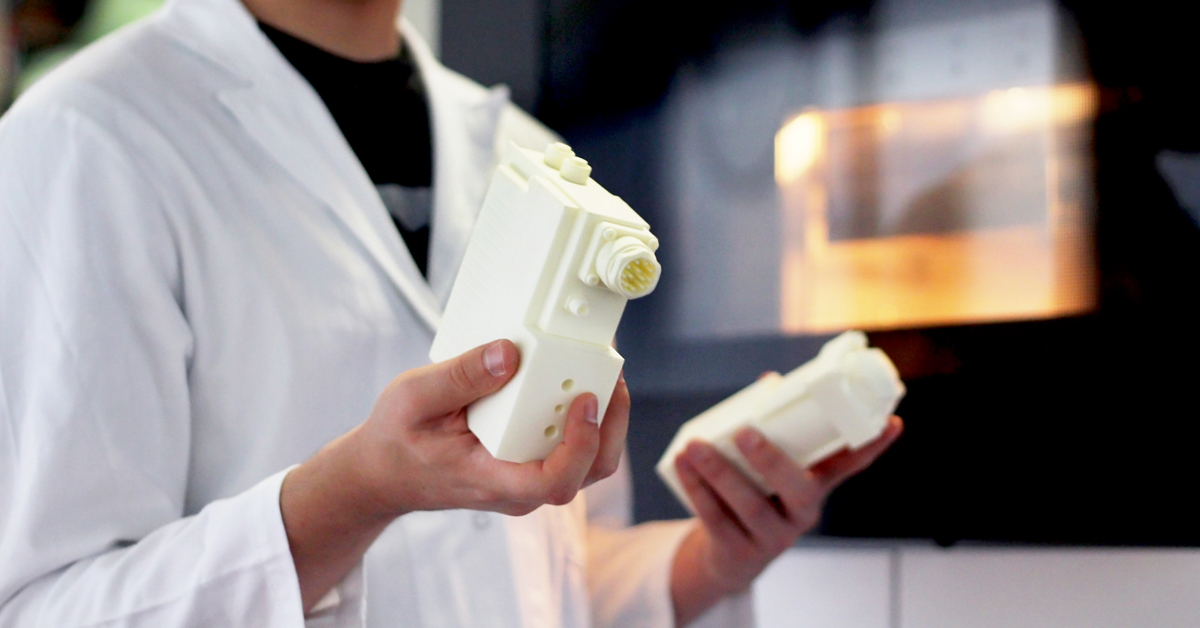When 3D Printing meets Biomimicry : a Bionic Handling Assistant inspired by elephant’s trunk
Posted By sculpteo on Apr 7, 2011 | 0 comments
The Bionic Handling Assistant from Festo is an adaptable assistance system that allows man and machine to interact effectively as a team and without risk. It was inspired by the nature of the elephant’s trunk.Festo is well known for its nature-inspired projects (aka Biomimicry) like Air Ray, AirJelly, Smartbird etc. They observe nature then use what they have learned to create a mechanical structure and incorporate that into the technology.
Festo has been chiefly responsible for the development and design of the Bionic Handling Assistant. To complement their own core competence the Festo team enlisted the support of generative manufacturing experts from the Fraunhofer Institute for Manufacturing Engineering and Automation IPA as partner. The team was able to utilize the expertise of Fraunhofer IPA in the area of rapid manufacturing
“With the aid of additive manufacturing, we can replicate structures from nature almost one-to-one” explains Andrzej Grzesiak of Fraunhofer IPA”
Additive manufacturing is used to produce customized, movable system parts made of polyamide applied in thin layers to a substrate during production. Every layer is fused with the layer below using a laser and only hardens in the areas defined by the control program. This enables 3D printing of sophisticated product geometries.
The result is lightweight flexible structures capable of exerting ample force. Another advantage: these sophisticated systems are produce without extravagant assembly processes and expensive tool costs. The high flexibility and low density of the polyamide at only 0.95 gm per cubic centimeter are ideal for the optimal strength to weight ratio of the Bionic Handling Assistant. Its entire body including the grippers is produced using additive manufacturing.
With over 40,000 individual muscle fibres, the trunk can move freely in every direction. The freedom of movement even means that the Bionic Handling Assistant can extend from 70 centimetres to 1.10 metres – something its natural role model cannot achieve. With eleven degrees of freedom, it is far more agile than conventional handling systems. Standing freely, it can reach within a radius of over one metre.
Its mechanical structure is flexible and can be programmed to execute a defined motion in space. Even in the event of a collision or a malfunction, the Bionic Handling Assistant poses no risk to persons, objects or individuals in its environment.
The compliant behavior is determined by the system’s pneumatics since air is compressible medium. The fingers of the gripper adapt to the contour of the object to be grasped while exerting lateral pressure, thereby fixing the hold on similarly sized parts. Given the state of the art, other industrial grippers cannot guarantee their grasp of dissimilar objects because of their rigid mechanisms and hard materials.
In future, generative manufacturing technologies will enable customized and sustainable manufacturing of sophisticated products due to its high flexibility and low resource consumption – even in process chain in which a large number of integrated functions is required. This technology paved the way for the cooperation between Festo and the Fraunhofer IPA on the development of the Bionic Handling Assistant.
On December 2nd 2010, Team from Festo and Fraunhofer IPA received the “Innovation Oscar” (Deutscher Zukunftspreis 2010) for Bionic Handling Assistant from the German President in Berlin.


 Connect with Google
Connect with Google Connect with Facebook
Connect with Facebook

